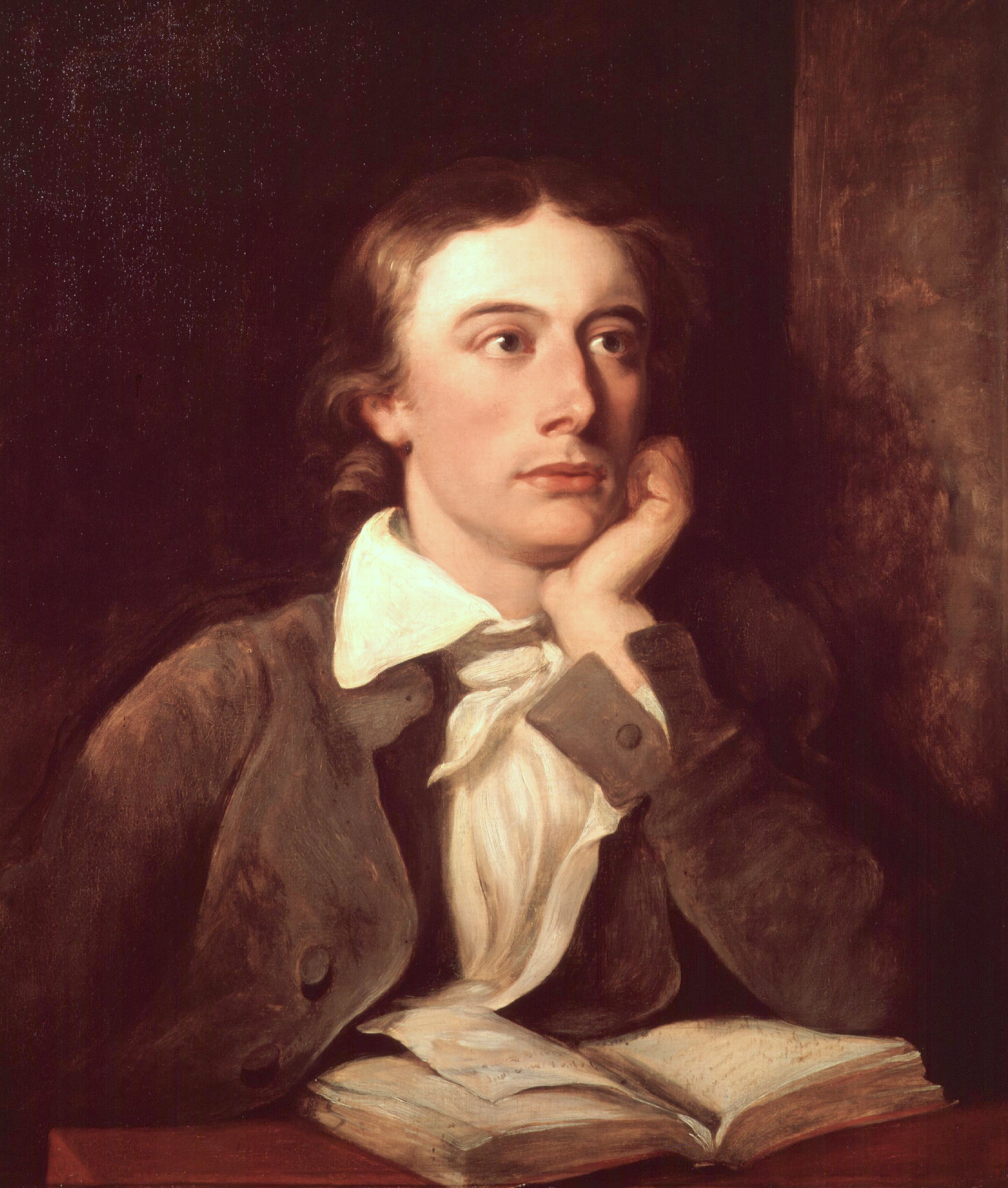da Lettera a Benjamin Bailey, 22 novembre 1817
John Keats frasi celebri
da Lettera a John Taylor, 27 febbraio 1818
da Lettera a George e Georgiana Keats, 18 febbraio 1819
da Lettera a John Hamilton Reynolds, 11 luglio 1819
Frasi sulla bellezza di John Keats
“Una bella cosa è una gioia per sempre: | La sua bellezza aumenta e mai | Sparirà nel nulla.”
cap. I, vv. 906-7
Endymione
da Lettera a James Augustus Hessey, 8 ottobre 1818
da Lettera a John Hamilton Reynolds, 3 febbraio 1818
da Lettera a John Hamilton Reynolds, 9 aprile 1818
Frasi sulla vita di John Keats
da Lettera a Benjamin Robert Haydon, 10-11 maggio 1817
da Lettera a James Rice, 14-16 febbraio 1820
da Lettera a George e Georgiana Keats, 18 febbraio 1819
da Lettera a George e Georgiana Keats, 18 febbraio 1819
da Lettera a Charles Brown, 30 novembre 1820
John Keats Frasi e Citazioni
da Lettera a John Hamilton Reynolds, 25 agosto 1819
da Lettera a Charles Brown, 30 novembre 1820
da Lettera a Benjamin Bailey, 23 gennaio 1818
da Lettera a Benjamin Robert Haydon, 22 dicembre 1818
da Lettera a John Taylor, 23 agosto 1819
da Lettera a Charles Brown, 23 settembre 1819
da Lettera a James Augustus Hessey, 8 ottobre 1818
da Lettera a Richard Woodhouse, 27 ottobre 1818
da Lettera a George e Georgiana Keats, 18 febbraio 1819
da Lettera a Benjamin Bailey, 13 agosto 1819
da Lettera a Fanny Brawne, febbraio 1820
da Lettera a Charles Brown, 28 settembre 1820
da Lettera a Fanny Brawne, 13 ottobre 1819
“La mia immaginazione è un monastero e io sono un monaco.”
da Lettera a Percy Bysshe Shelley, 16 agosto 1820
John Keats: Frasi in inglese
“He play'd an ancient ditty long since mute,
In Provence call'd "La belle dame sans mercy."”
Stanza 33
Poems (1820), The Eve of St. Agnes
“I have nothing to speak of but my self-and what can I say but what I feel”
Letter to John Hamilton Reynolds (August 24, 1819)
Letters (1817–1820)
Letter to Benjamin Bailey (July 18, 1818)
Letters (1817–1820)
Letter to John Hamilton Reynolds (February 19, 1818)
Letters (1817–1820)
" I Stood Tiptoe http://www.bartleby.com/126/2.html", l. 1
Poems (1817)
Stanza 5. The final lines of this poem have been rendered in various ways in different editions, some placing the entire last two lines within quotation marks, others only the statement "Beauty is truth, truth beauty," and others without any quotation marks. The poet's final intentions upon the matter before his death are unclear.
Poems (1820), Ode on a Grecian Urn
“Pleasure is oft a visitant; but pain
Clings cruelly to us.”
Bk. I, l. 906
Endymion (1818)
"I Stood Tiptoe", l. 87
Poems (1817)
“And still she slept an azure-lidded sleep,
In blanched linen, smooth, and lavender’d.”
Stanza 30
Poems (1820), The Eve of St. Agnes
“So let me be thy choir, and make a moan
Upon the midnight hours”
"Ode to Psyche", st. 3
Poems (1820)
"I Stood Tiptoe", l. 10
Poems (1817)
It has as much delight in conceiving an Iago as an Imogen. What shocks the virtuous philospher, delights the camelion poet.
Letter to Richard Woodhouse (October 27, 1818)
Letters (1817–1820)
Letter to John Taylor (February 27, 1818)
Letters (1817–1820)
Letter to John Hamilton Reynolds (February 3, 1818)
Letters (1817–1820)
